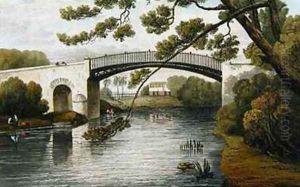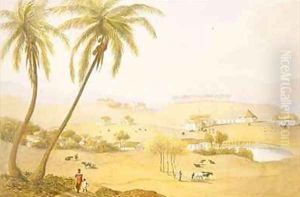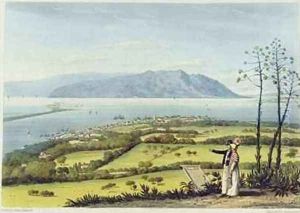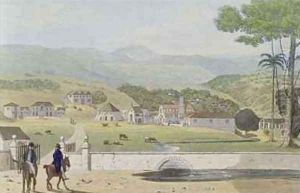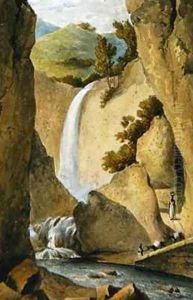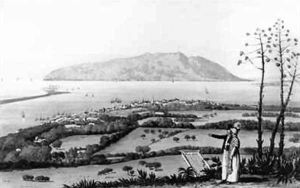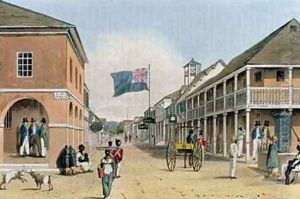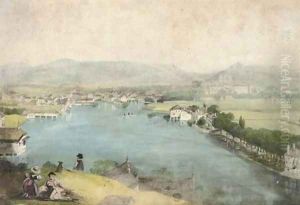James Hakewill Paintings
James Hakewill was an English architect and artist, known for his skill in watercolor and his architectural works. Born on October 1778 in London, Hakewill is often celebrated for his picturesque tours and illustrated books that documented landscapes and cultural heritage, particularly in the context of the early 19th century.
Hakewill trained as an architect and was a pupil of the renowned neo-classical architect John Soane. However, it was his talent and passion for sketching and painting that would come to define his career and legacy. Throughout his life, Hakewill undertook several tours to Italy and Jamaica, capturing the landscapes, architectural marvels, and daily life of these regions with his adept use of watercolors.
One of Hakewill’s major works includes 'A Picturesque Tour of Italy,' published in 1820 after his tour from 1816 to 1817. This tour resulted in a series of drawings that highlighted the beauty of the Italian countryside, its ancient ruins, and the varied architecture. His work provided a valuable record of Italy's picturesque vistas and was well-received in England, where there was a growing appetite for travel literature and artwork depicting exotic locales.
Another significant project of Hakewill was his work in Jamaica, which led to the publication of 'A Picturesque Tour of the Island of Jamaica' in 1825. This collection of drawings is particularly valuable as it documents the landscape and colonial life in Jamaica during a period of significant historical change, just before the abolition of slavery in the British Empire.
Hakewill’s contribution to architecture is also noteworthy. Although less well-known than his illustrations, his architectural designs include a range of private homes and public buildings. He was an advocate of the Greek Revival style in architecture, which was popular at the time.
His legacy is preserved through his publications and the watercolors that survive him. Hakewill's work is considered important for its artistic merit as well as its documentary value, providing insight into the landscapes and societies of early 19th-century Europe and Jamaica. James Hakewill passed away in October 1843, leaving behind a rich portfolio of work that continues to be of interest to art historians, architects, and cultural studies scholars.
